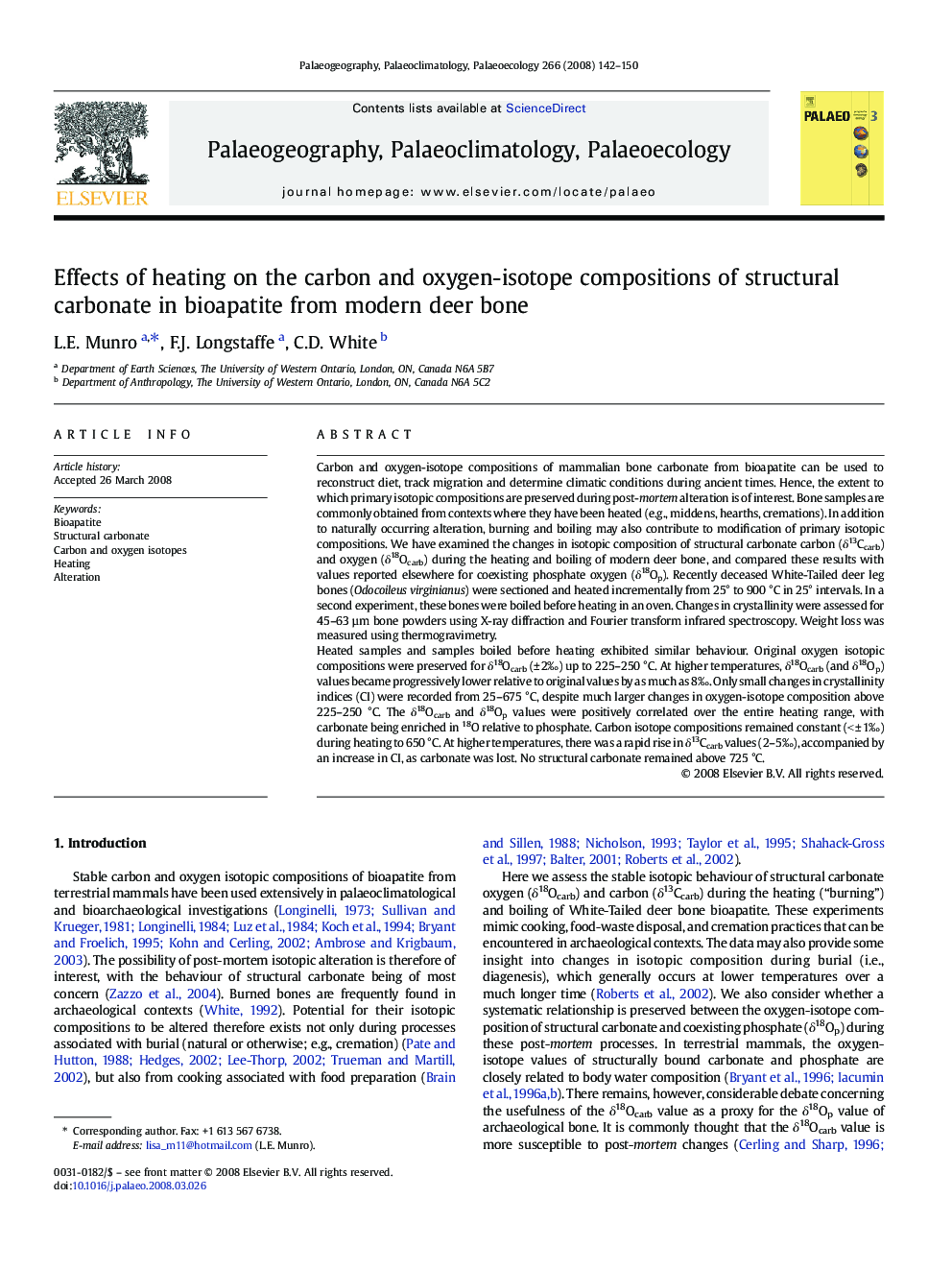| Article ID | Journal | Published Year | Pages | File Type |
|---|---|---|---|---|
| 4468438 | Palaeogeography, Palaeoclimatology, Palaeoecology | 2008 | 9 Pages |
Carbon and oxygen-isotope compositions of mammalian bone carbonate from bioapatite can be used to reconstruct diet, track migration and determine climatic conditions during ancient times. Hence, the extent to which primary isotopic compositions are preserved during post-mortem alteration is of interest. Bone samples are commonly obtained from contexts where they have been heated (e.g., middens, hearths, cremations). In addition to naturally occurring alteration, burning and boiling may also contribute to modification of primary isotopic compositions. We have examined the changes in isotopic composition of structural carbonate carbon (δ13Ccarb) and oxygen (δ18Ocarb) during the heating and boiling of modern deer bone, and compared these results with values reported elsewhere for coexisting phosphate oxygen (δ18Op). Recently deceased White-Tailed deer leg bones (Odocoileus virginianus) were sectioned and heated incrementally from 25° to 900 °C in 25° intervals. In a second experiment, these bones were boiled before heating in an oven. Changes in crystallinity were assessed for 45–63 µm bone powders using X-ray diffraction and Fourier transform infrared spectroscopy. Weight loss was measured using thermogravimetry.Heated samples and samples boiled before heating exhibited similar behaviour. Original oxygen isotopic compositions were preserved for δ18Ocarb (± 2‰) up to 225–250 °C. At higher temperatures, δ18Ocarb (and δ18Op) values became progressively lower relative to original values by as much as 8‰. Only small changes in crystallinity indices (CI) were recorded from 25–675 °C, despite much larger changes in oxygen-isotope composition above 225–250 °C. The δ18Ocarb and δ18Op values were positively correlated over the entire heating range, with carbonate being enriched in 18O relative to phosphate. Carbon isotope compositions remained constant (< ± 1‰) during heating to 650 °C. At higher temperatures, there was a rapid rise in δ13Ccarb values (2–5‰), accompanied by an increase in CI, as carbonate was lost. No structural carbonate remained above 725 °C.
